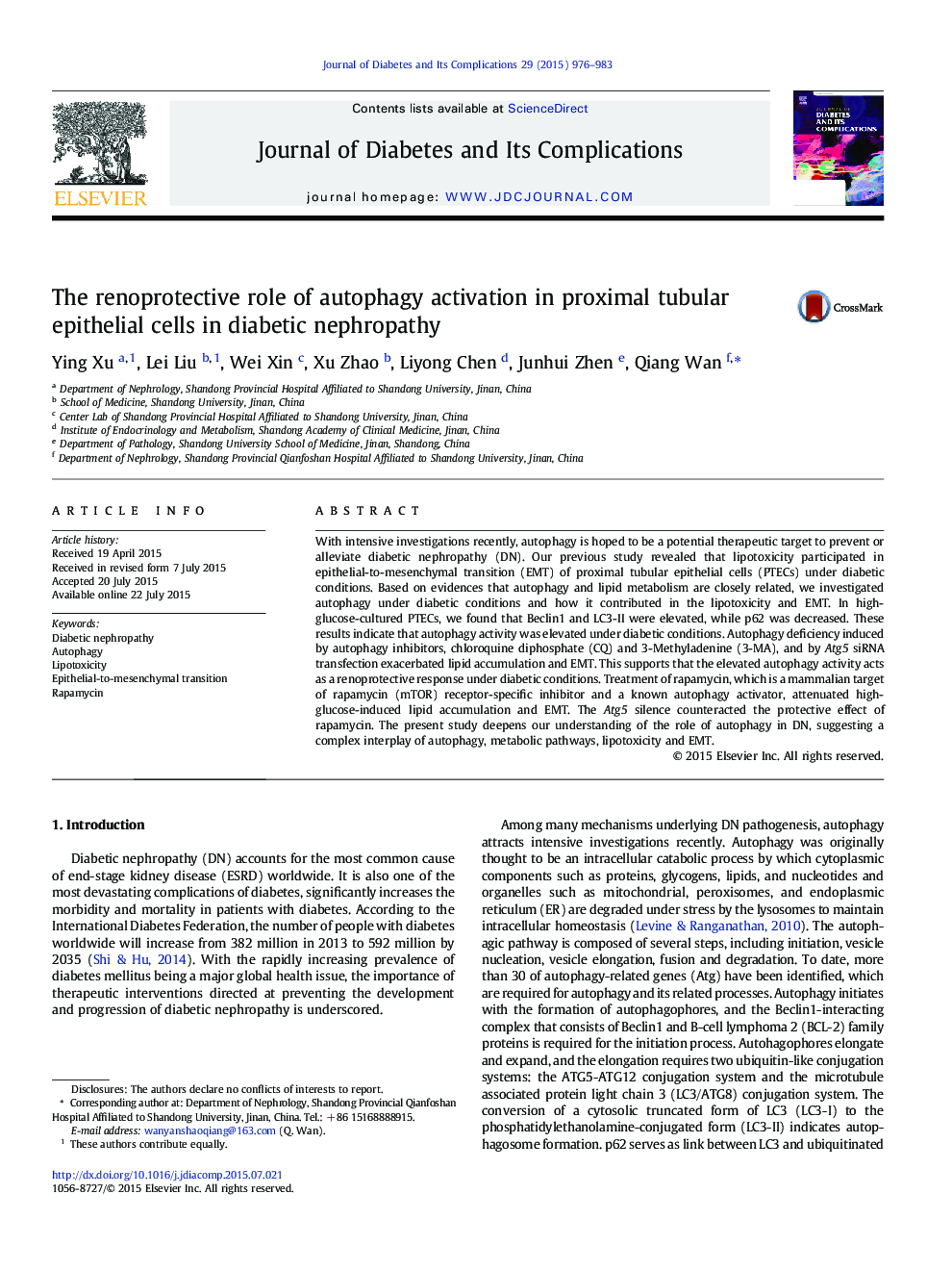| کد مقاله | کد نشریه | سال انتشار | مقاله انگلیسی | نسخه تمام متن |
|---|---|---|---|---|
| 5902273 | 1156847 | 2015 | 8 صفحه PDF | دانلود رایگان |
With intensive investigations recently, autophagy is hoped to be a potential therapeutic target to prevent or alleviate diabetic nephropathy (DN). Our previous study revealed that lipotoxicity participated in epithelial-to-mesenchymal transition (EMT) of proximal tubular epithelial cells (PTECs) under diabetic conditions. Based on evidences that autophagy and lipid metabolism are closely related, we investigated autophagy under diabetic conditions and how it contributed in the lipotoxicity and EMT. In high-glucose-cultured PTECs, we found that Beclin1 and LC3-II were elevated, while p62 was decreased. These results indicate that autophagy activity was elevated under diabetic conditions. Autophagy deficiency induced by autophagy inhibitors, chloroquine diphosphate (CQ) and 3-Methyladenine (3-MA), and by Atg5 siRNA transfection exacerbated lipid accumulation and EMT. This supports that the elevated autophagy activity acts as a renoprotective response under diabetic conditions. Treatment of rapamycin, which is a mammalian target of rapamycin (mTOR) receptor-specific inhibitor and a known autophagy activator, attenuated high-glucose-induced lipid accumulation and EMT. The Atg5 silence counteracted the protective effect of rapamycin. The present study deepens our understanding of the role of autophagy in DN, suggesting a complex interplay of autophagy, metabolic pathways, lipotoxicity and EMT.
Journal: Journal of Diabetes and its Complications - Volume 29, Issue 8, NovemberâDecember 2015, Pages 976-983
